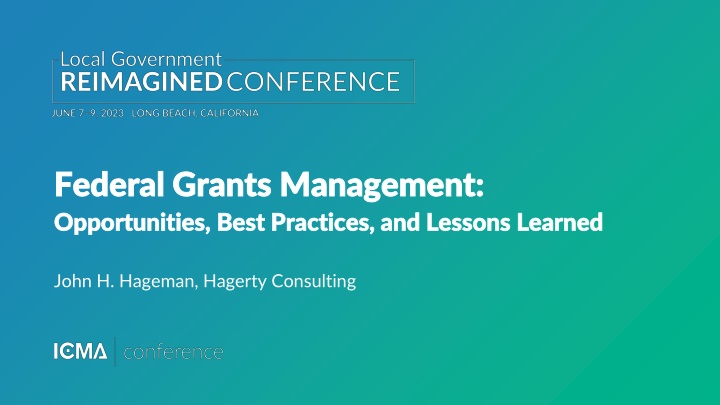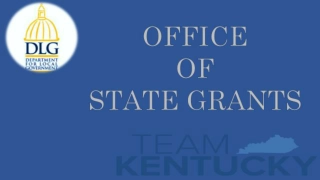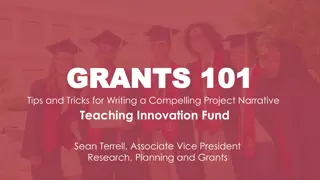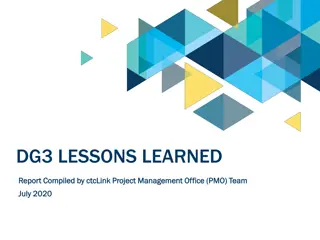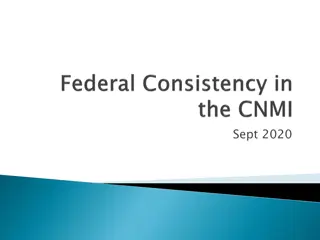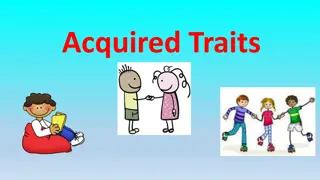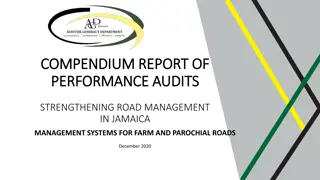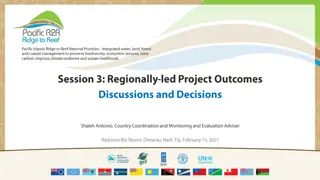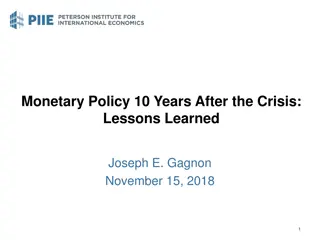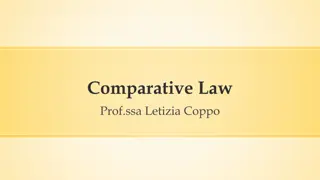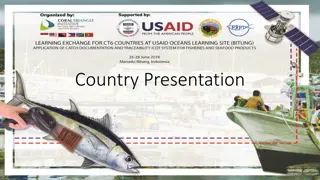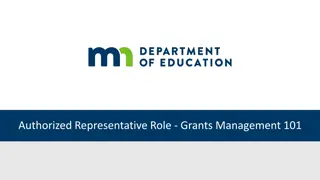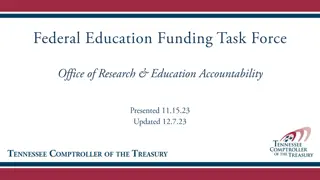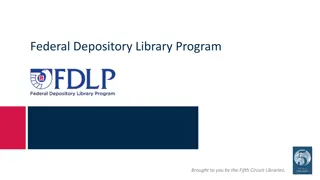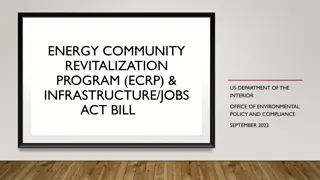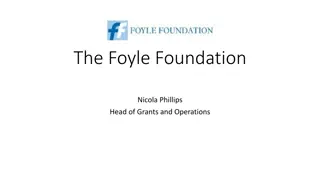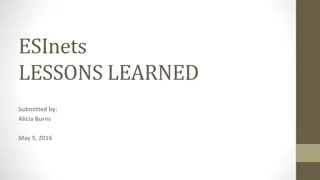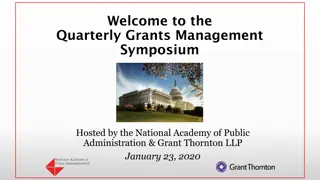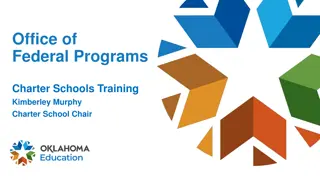Federal Grants Management: Opportunities, Best Practices, and Lessons Learned
Explore federal grants management opportunities, best practices, and lessons learned through an insightful presentation by John H. Hageman from Hagerty Consulting. Learn about the federal funding landscape, Detroit's grants management reform, and key elements for successful grant management. Discover insights on the Infrastructure Investment and Jobs Act, Inflation Reduction Act, and more significant funding initiatives shaping the current scenario.
Download Presentation

Please find below an Image/Link to download the presentation.
The content on the website is provided AS IS for your information and personal use only. It may not be sold, licensed, or shared on other websites without obtaining consent from the author.If you encounter any issues during the download, it is possible that the publisher has removed the file from their server.
You are allowed to download the files provided on this website for personal or commercial use, subject to the condition that they are used lawfully. All files are the property of their respective owners.
The content on the website is provided AS IS for your information and personal use only. It may not be sold, licensed, or shared on other websites without obtaining consent from the author.
E N D
Presentation Transcript
Federal Grants Management: Federal Grants Management: Opportunities, Best Practices, and Lessons Learned Opportunities, Best Practices, and Lessons Learned John H. Hageman, Hagerty Consulting
Your Presenter Your Presenter John H. Hageman Deputy Director, Hagerty Consulting Former Chief of Staff, City of Detroit Office of the Chief Financial Officer john.hageman@hagertyconsulting.com
Introduction to Hagerty Consulting Introduction to Hagerty Consulting $50+ Billion 21+ Total Years Federal Emergency Management Agency Public Assistance Program of Experience in Disaster Recovery Grant Program Management $13+ Billion $75+ Billion American Rescue Plan Act Programs 27 States & Territories $4+ Billion Where Hagerty is Providing Support for Management of Federal Recovery Funds Coronavirus Aid, Relief, and Economic Security Act Programs $8+ Billion Other Federal Grants, including Mitigation Grants and US Department of Housing and Urban Development Grants
Presentation Presentation Objectives Objectives Provide an overview of the federal funding landscape, with an emphasis on the Infrastructure Investment and Jobs Act (IIJA) and Inflation Reduction Act (IRA) Provide an inside look into Detroit's grants management reform during and post- bankruptcy, including lessons learned and elements of success Highlight best practices for grants management and how to overcome common challenges
Federal Funding Landscape Federal Funding Landscape
Overview of the Federal Funding Landscape Overview of the Federal Funding Landscape Since the beginning of the COVID-19 pandemic, the federal government has made available an unprecedented amount of funding for local governments. While early funding programs such as the CARES Act focused on providing immediate response for public health and economic needs, subsequent legislation began to incorporate a number of longer-term lenses, including incorporating equity and building resilience. $350 billion to state and local governments through Coronavirus State and Local Fiscal Recovery Funds (SLFRF) Program American Rescue Plan Act (ARPA) $1.2 trillion in total investment in the nation s infrastructure, with nearly all programs having some sort of resilience focus or criteria Infrastructure Investment and Jobs Act (IIJA) Inflation Reduction Act (IRA) $370 billion in investments in resilience, sustainability and energy security Funds numerous grant and disaster programs and allows ARPA funding to be used more flexibly, including expanding allowable use of SLFRF funds for local match 2023 Consolidated Appropriations Act (Omnibus)
Overview of Infrastructure Investment and Jobs Act Overview of Infrastructure Investment and Jobs Act The $1.2 trillion IIJA includes new programs, altered programs, reauthorized programs, and regulatory changes designed to rebuild the nation s infrastructure Funding available over the next five years, or until expended by the federal government Numerous bureaus across 17 federal agencies will administer funding, including the Departments of Transportation, Commerce, and Energy, as well as the Environmental Protection Agency Most funding will pass through federal agencies to state/local governments Funding mechanisms vary and include formula-based allocations, competitive grants and block grants Some grant programs have already completed the first application cycle, while some have not even completed initial rule-making
Overview of Infrastructure Investment and Jobs Act Overview of Infrastructure Investment and Jobs Act $82.1 B Public Transportation $66 B Passenger and Freight Rail $64.4 B Broadband $37.7 B Safety $35.1 B Resilience $315.2 B Roads, Bridges, and Major Projects $12.9 B EVs, Bus, Ferry $21.6 B Environmental Remediation $54.1 B Clean Energy and Power $20 B Airports and Aviation $16.7 B Ports and Waterways $8.1 B Other $470+ B 240+ 100+ $725+ B Available to governments for new or modified programs Unique programs accessible to governments Unique new or modified programs accessible to governments Available to governments Source: Bipartisan Infrastructure Law Guidebook Data; Hagerty Consulting Internal Analysis *Government is defined as state (including higher education), local, tribal, and territorial governments
Overview of Infrastructure Investment and Jobs Act Overview of Infrastructure Investment and Jobs Act $460+ B 210+ 90+ $700+ B Available to state governments for new or modified programs Unique programs accessible to state governments Unique new or modified programs accessible to state governments Available to state governments $100+ B 140+ 60+ $220+ B Available to local governments for new or modified programs Unique programs accessible to local governments Unique new or modified programs accessible to local governments Available to local governments Source: Bipartisan Infrastructure Law Guidebook Data; Hagerty Consulting Internal Analysis *State government includes higher education
Overview of the Inflation Reduction Act Overview of the Inflation Reduction Act The IRA contains unprecedented funding for clean energy production and clean technology innovations Includes $370 billion worth of funding over the next several years for new programs, additional funding for existing programs, more than 20 new or modified tax incentives, and tens of billions of dollars in grant/loan programs 16 departments, agencies, and offices across the Federal Government will administer the funding opportunities included in the IRA Of note, the IRA provides a direct payment option for non-taxable entities, valid throughout the 2020s The Treasury Department continues to develop tax credits guidance on the direct-pay process Funding will be disbursed through production, investment, and other tax credits (and bonus credits), competitive grants, rebates, loans, loan guarantees, direct federal spending, and cooperative agreements Eligible recipients include states, counties, municipalities, Tribes, businesses, energy facilities, and consumers
Overview of the Inflation Reduction Act Overview of the Inflation Reduction Act Transportation Manufacturing Building and Energy Efficiency Low-carbon, energy efficient buildings and materials Electricity Clean vehicles and fuels, improving safety and health in neighborhoods and disadvantaged communities Developing US industrial capacity for clean energy manufacturing and reducing emissions Tax credits, funding, and financing for consumers and producing clean energy sources Land Management Climate Research Climate Justice Agriculture, forestry, and other land conservation efforts, support for permitting process efficiencies Funding for national laboratory infrastructure and other research to support resilience and mitigation Funding for disadvantaged communities, including protection from and the reduction of pollution
Overview of the Inflation Reduction Act Overview of the Inflation Reduction Act 63+ 49+ 126+ 61+ Existing, extended, and otherwise modified programs Number of programs available for state, local, and Tribal governments Opportunities for tax credits and other funding as part of IRA Newly available programs and tax credits Direct-Pay 23+ $370+ B Newly available option for local jurisdictions New or modified tax credit opportunities Available in program funding and tax credits
Example Programs Example Programs Provides funding to eligible entities to make surface transportation systems resilient to the impacts of climate change, extreme weather, and other natural disasters This funding has distinct set asides for rural communities and Tribes Applications for FY 2023 due August 18, 2023 Promoting Resilient Operations for Transformative, Efficient, and Cost- Saving Transportation (PROTECT) Funding Source: IIJA This allocation-formula based funding directs funding to efforts benefiting small and disadvantaged communities, specifically for the testing and remediation of PFAS and other emerging contaminants Water Infrastructure Improvements for the Nation (WIIN) Small and Underserved Communities Emerging Contaminants Grant Program Funding Source: IIJA This program's competitive grants for state and local governments can be used for projects improving safety, transportation access, and the mitigation of adverse effects surface transportation has on disadvantaged communities Anticipated timeline: NOFO Summer 2023 Neighborhood Access and Equity Grant Program Funding Source: IRA
Detroit: Grants Management Reform Detroit: Grants Management Reform
Detroit: Grants Management Reform Detroit: Grants Management Reform Leading up to Detroit's 2013 bankruptcy, its ability to access and utilize federal funding dropped significantly. Between 2008 and 2013, the City's federal award spending decreased by more than 30 percent. In 2011 and 2012 single audits, the City had a combined 50 adverse findings and 61 qualified opinions. Questioned costs peaked in 2013 at $18.5 million, putting key resources at-risk during the peak of the City's financial crisis Compliance requirements at issue included cash management, procurement, reporting and period of availability, unallowable activities, and unallowable costs/cost principles
Detroit: Grants Management Reform Detroit: Grants Management Reform While the issues were perhaps more severe, cities face similar grants management issues: Detroit's Solution Grants Management Reform: key restructuring initiative during Detroit s financial crisis and bankruptcy Lack of standard systems, processes, and procedures and no/outdated documented policies/procedures Philanthropic organizations funded assessment and initial implementation Lack of current technology and manual processes; severe accountability gaps due to multiple unconnected spreadsheets and databases Implementation plan focused on structural reforms and the grants lifecycle Bad data, poor accounting, and unreliable and difficult to perform financial reporting Grants management reform became part of Detroit's broader financial management reform Poorly defined organizational responsibilities with little to no staff training
Detroit: Grants Management Reform Detroit: Grants Management Reform Strategy and plan focused on a two-pronged approach to provide immediate stabilization and begin sustainable reform that integrated into the City's comprehensive financial management reform agenda (6-9 months) (18+ months) Establish and communicate vision Align with citywide financial management restructuring and reform Establish citywide grant priorities Establish new legislation and policies mandating and implementing reforms Establish roles & responsibilities Procure & implement Grants Management System (GMS) Develop & implement new procedures Close federal CAPs & correct ongoing audit finding Hire leadership, key staff Align with new enterprise- wide financial management system Clean up accounting and migrate data
Detroit: Grants Management Reform Detroit: Grants Management Reform Office of Grants Management Office of the Chief Financial Officer Office of the Chief Development Officer Strategically oversee, coordinate, source, and administer grants for the City of Detroit by establishing processes that support end- to-end grants management activities consistent with federal, state, and local requirements, thereby achieving the greatest use and accountability of grant dollars. Office of Grants Management Office of the Assessor Office of the Chief Development Officer Office of Contracting and Procurement Office of Departmental Financial Services Provide support to the City and departments through the identification and acquisition of strategic public and private resources. Accomplish this through researching and writing grant and donation opportunities that match City priorities, building public-private partnerships, and leading cross-departmental application teams. Office Financial Planning and Analysis Office of the Controller Office of the Treasury Office of Budget In late 2017, the City merged both offices into the Office of Development and Grants, which exists today *As of 2017, in order to show structure and mission during the reform period
Grants Management Best Practices Grants Management Best Practices
Challenges and Solutions Challenges and Solutions Regional Cooperation. Federal preference to applications with a regional focus. COGs and others can serve as coordinators for application development and often have grants management experience. Common Challenges Limited Capacity for Application Development Leverage ARPA Funds. SLFRF funds can be used to build capacity, hire resources, and as the non-federal match. Lack of Available Matching Funds Use Membership Organizations. Member associations like ICMA, NACo, and NLC host regular webinars. Philanthropic foundations sponsor resources and content, including the e311 Financial Assistance Program and the Local Infrastructure Hub funded by Bloomberg Philanthropies and others. Lack of Experience Administering Federal Funds Federal and State Technical Assistance. Federal agencies offer technical assistance programs associated with IIJA and IRA programs. Some states are developing and administering technical assistance for local governments.
Pre Pre- -Award Best Practices Award Best Practices Opportunity Identification Application Development Grant Writing and Submission Grant Planning Leverage external NOFO tracking Establish cross- departmental team Build case that aligns with Federal priorities and evaluation criteria Engage community stakeholders Prioritize multi- jurisdiction opportunities Analyze prior awardees Develop grants plan that reflects citywide priorities Describe how project fits within an overall community strategy Closely evaluate NOFO and key dates Establish criteria to determine pursuit Integrate with budget and capital planning Direct and action- oriented writing Evaluate ability to implement Prioritize letters of support from partners Use data and graphics to emphasize narrative
Pre Pre- -Award Best Practices: Lessons Learned from Detroit Award Best Practices: Lessons Learned from Detroit Identifying and Pursuing Grants Overall Funds Raised Number of Active Grants Pre-Reform: Reactive Post-Reform: Proactive Opportunities identified ad hoc; few competitive grants pursued Grant planning during budget development 2015 Not Tracked Not Tracked Comprehensive grants repository, including private and competitive opportunities Pursuit decisions not necessarily made in consultation with Mayoral priorities 2016 $258 million 156 Standardized approval process, including Mayor s Office approval 2017 $275 million 318 Fragmented application production and approvals process More coordinated application production with task accountability 2018 $298 million 327 Opportunity and application status tracking No visibility into opportunity progress or success rate 2019* $309 million 411 Source for Funds Raised and Number of Active Grants: https://www.flipsnack.com/hadroutdesign/odg-impact-report-final-20191216.html?p=1 *Funds raised are projected; active grants are to-date
Post Post- -Award Best Practices Award Best Practices Program Design and Implementation Financial and Programmatic Reporting Program Monitoring Closeout Align key outcomes with organizational goals and objectives Develop monitoring tools to include risk assessments Complete reconciliation of financial and program activities and confirm allowability Develop a reporting checklist Conduct a data comparison of reporting periods to assess/resolve risk Define roles and responsibilities for key staff Establish regular meetings with staff carrying out program goals Close and disable accounting system accounts Create dedicated calendar with key milestones, benchmarks, and deadlines Automate the workflow with a grants management solution Track spend timeliness and identify/resolve bottlenecks Develop a checklist of all required documentation for record retention
Post Post- -Award Best Practices: Lessons Learned from Detroit Award Best Practices: Lessons Learned from Detroit Grant Compliance Findings Pre-Reform: Reactive Post-Reform: Proactive 98 75 Single audit findings never resolved Single audit clean up and agency corrective actions plans 41 33 Decentralized and lack of accountability 18 12 2017 Regular monitoring and partnering with agency fiscal staff 2012 2013 2014 2015 2016 Lack of documented policies and procedures Questioned Costs Standard compliance processes that allow for flexibility $18,512,118.00 No singular focus on grants management $7,305,027.00 Monthly close and reconciliation $214,100.00 $11,918.00 $- $- 2012 2013 2014 2015 2016 2017
Key Takeaways Key Takeaways Early and frequent communication with federal and state elected officials and policymakers is essential. Federal government is placing emphasis on regional coordination partnering on large-scale, regional projects can increase competitiveness for several grant programs. Many IIJA and IRA programs incorporate significant emphasis on equity and resilience each program may define and interpret these concepts in different ways. Securing funding is only the beginning, focus on your overall grants management infrastructure. Leverage partners and external resources to support grant identification and pursuit. Take credit for successes use this as an opportunity to secure additional funding.
Questions? Questions? John H. Hageman Deputy Director, Hagerty Consulting john.hageman@hagertyconsulting.com Want to learn more about Hagerty Consulting s Infrastructure Funds Management approach? Scan the QR code to read more.
